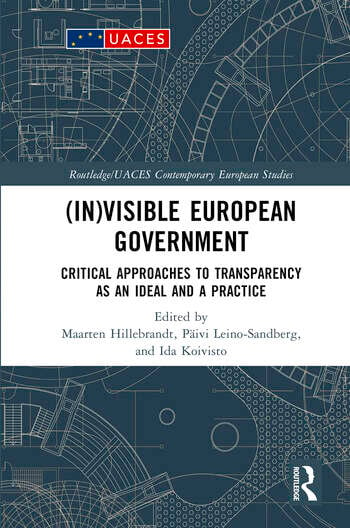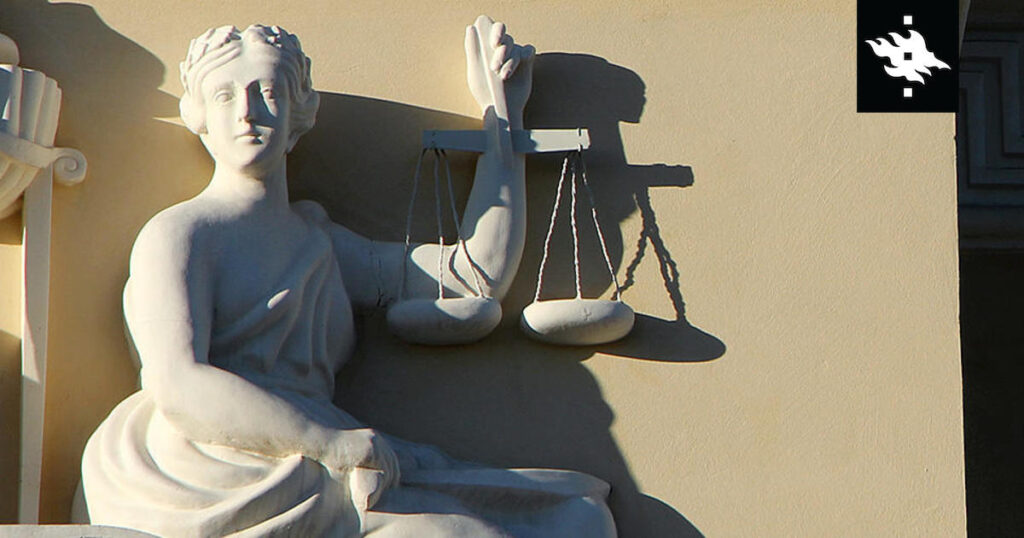(In)visible European Government: Critical Approaches to Transparency as an Ideal and a Practice, edited by Maarten Hillebrandt, Päivi Leino-Sandberg, and Ida Koivisto, and published today, is hailed as a “foundational text [that] will shape debate for a considerable time in the future”.
On 22 December, Routledge published the edited volume (In)visible European Government: Critical Approaches to Transparency as an Ideal and a Practice. The book, edited by Maarten Hillebrandt (Utrecht University School of Governance) and Päivi Leino-Sandberg and Ida Koivisto (both Helsinki University Law School) is the outcome of an Academy of Finland research project into European government transparency (with which this blog has also been affiliated).
Between 2017 and 2021, the project produced multiple research studies and seminars involving several renowned names in the field of European transparency studies. Following the focus of each of these respective seminars, the book brings together the contributions of most of these project collaborators, structured along three core topics: (1) How to study European government transparency (research methodology); (2) Normative appraisals and critiques of European government transparency (critical theory); and (3) case studies exploring new frontiers of European government transparency research.
The result is an impressive kaleidoscope of approaches, perspectives, and foci around the shared topic of European government transparency.
An overview of the book’s authors and themes
The book comprises 17 chapters prepared by 19 authors, all of them academic researchers at European research institutions. The authors hail from diverse disciplinary backgrounds, including (European) law, public administration, political science, philosophy, and culture and media studies. As such, they bring very different research approaches and normative perspectives to the table, ranging from doctrinal analysis, through empirical causal effect studies, to critical cultural reflections on the place of transparency in the current Zeitgeist. Whereas many of the book’s chapters relate in some way to policies and experiences of the institutions of the European Union, this is not the case for all. Diversity is also found in the types of transparency explored by the authors, which ranges from access to documents, to algorithmic and social media platform transparency, to transparency of EU Council sponsorship, and everything in between.
In order to lay bare the commonalities between the chapters (of which there are plenty), and foment a ‘dialogue’ between them, the book’s editors asked all contributors to ponder on the following four foundational questions:
- What does “transparency” mean in the context of your chapter?
- What does your “critical approach” entail? (Critical of what, in what way?)
- How does your contribution relate to the governance context?
(Transparency of what/in what context?) - What does your contribution tell us about the contestation over forms of government (in)visibility?
When the editors proposed the volume to the publishing house, one of the proposals anonymous viewers enthusiastically predicted that the book would be
a foundational text [that] will shape debate for a considerable time in the future, and serve as a reference point just as, for example, Hood and Heald did in the early 2000s.
Daunted by the expectation created by this praise, the book’s editors nevertheless humbly submit their hope that the book will be of use, and offer food for thought, to a wide range of readers, both academics and practitioners.
Table of contents
1. Introduction: European Government Transparency beyond the Slogans
Päivi Leino-Sandberg, Maarten Hillebrandt and Ida Koivisto
PART 1: How to research transparency?
2. Transparency as a Critical Research Agenda: Engaging with the EU Institutions on Access to Documents
Päivi Leino-Sandberg
3. What is the Purpose of Regulation 1049/2001? An Empirical Analysis of Member State Positions
Liisa Leppävirta
4. Interpretive Approaches in Transparency Studies: Gaining New Perspectives on Old Problems
Marlen Heide and Sofia Wickberg
5. Learning Through Rejection: Studying the Informalisation of EU Readmission Policy with Access to Documents Requests
Milka Sormunen and Davide Gnes
PART 2: Against transparency? Conceptualising the problematic sides of government openness
6. The Human Face of Legal Transparency? Performance in Action
Ida Koivisto
7. Toward Radical Transparency
Clare Birchall
8. Escaping the Transparency Trap: In Defense of Playacting
Emmanuel Alloa
9. Algorithms and the Open Society: New Approaches to Information, Transparency and Accountability
Alexander Ingrams
10. Government Transparency: Dispelling the Myth
Dorota Mokrosinska
PART 3: From institutional manifesto to information society? New horizons in the EU’s transparency agenda
11.Invisible Practices: The Transparency Dilemma in EU Institutions
Stéphanie Novak
12. Transparency as Enabling Citizen-participation: The Quality of Public Information on EU Decision-making Processes
Alexander Hoppe
13. Access to documents and the EU agency Frontex: Growing pains or outright obstruction?
Melanie Fink and Maarten Hillebrandt
14. The Council Presidency, brought to you by Coca-Cola: Transparency about Commercial Sponsoring
Gijs Jan Brandsma
15. EU Agencies and Lobbying Transparency Rules: A Case Study on the Islandization of Transparency?
Emilia Korkea-aho
16. “Mediated Transparency”: The Digital Services Act and the legitimization of platform power
Marta Maroni
17. Epilogue: Against transparency. For engaged publics
Deirdre Curtin
(In)visible European Government: Critical Approaches to Transparency as an Ideal and a Practice, edited by Maarten Hillebrandt, Päivi Leino-Sandberg, and Ida Koivisto, can now be ordered online via the Routledge/UACES Contemporary European Studies series website. It costs 104 GBP in hardcover version, or 31.19 GBP in e-book version.





